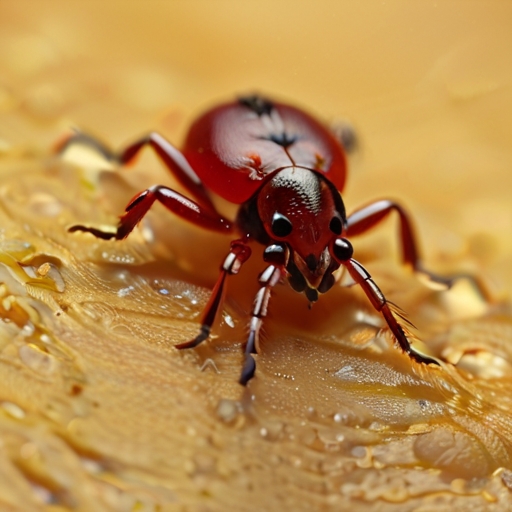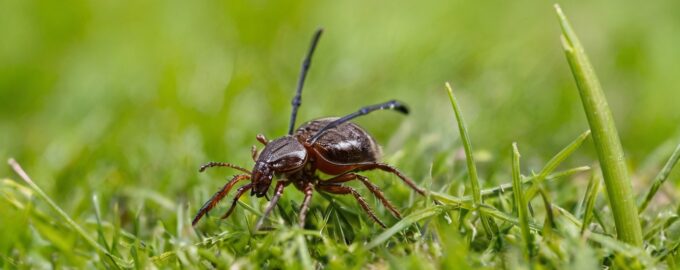Ticks are tiny parasites capable of causing serious harm to human health. In this article, we will take a detailed look at when a tick becomes dangerous, what happens after it bites, the potential dangers associated with ticks, preventive measures to take, and what to do after a tick bite.
When does a tick become dangerous for humans?
A tick becomes dangerous when it penetrates the skin and begins feeding on the host’s blood. The danger lies not only in the mechanical damage to the skin but also in the potential transmission of diseases. Here are a few key points.
- Seasonal activity. Ticks are most active during warm seasons, from spring to autumn.
- Endemic regions. Some areas are known for a high number of ticks, such as forests and meadows, increasing the risk of bites.
- Virus carriers. Not all ticks are dangerous, but those that carry pathogens can transmit serious diseases.
What happens after a tick bite?
After a tick bite, the following processes occur:
- Injection of enzymes. The tick injects enzymes that prevent blood clotting and numb the bite area, making the feeding process unnoticeable to the host.
- Feeding on blood. The tick feeds on blood, increasing in size. This process can last from several hours to several days.
- Risk of infection. If the tick is infected, it can transmit pathogens into the human body.
Why are ticks dangerous?

Ticks can be carriers of various diseases, some of which pose a serious threat to health.
- Lyme disease. A bacterial infection transmitted by Ixodes ticks, causing various symptoms from skin rashes to neurological disorders.
- Encephalitis. A viral infection that can cause brain inflammation and lead to severe consequences.
- Ehrlichiosis and Anaplasmosis. These bacterial infections affect white blood cells and can lead to serious health problems.
- Tularemia. A bacterial infection causing fever, skin ulcers, and swollen lymph nodes.
Prevention of tick bites

The best way to fight ticks is through prevention. Here are some recommendations to help protect yourself from bites:
- Clothing. Wear light-colored clothing with long sleeves and pants, tuck pants into socks to reduce tick access to the skin.
- Repellents. Use repellents containing DEET or other active ingredients on exposed skin and clothing.
- Avoid tall grass. Try to avoid walking through tall grass and dense forests, especially in endemic areas.
- Tick checks. After every outdoor activity, thoroughly check your body and clothing for ticks. Pay special attention to the neck, armpits, groin, and scalp.
- Pet treatment. Pets such as dogs and cats can also carry ticks. Regularly treat them with anti-tick products.
What to do after a tick bite?
If you are bitten by a tick, it is important to act quickly and correctly.
- Removing the tick. Use fine-tipped tweezers to grasp the tick as close to the skin as possible. Pull it upward with steady pressure, avoiding sudden movements.
- Cleaning the bite area. After removing the tick, thoroughly wash the bite area with soap and water and apply an antiseptic.
- Monitoring symptoms. Watch for symptoms such as fever, rash, headache, or muscle pain. The appearance of these symptoms is a signal to seek medical attention immediately.
- Consulting a doctor. It is important to show the removed tick to a doctor to determine if preventive antibiotic treatment is necessary, especially if you are in an endemic region.
- Preserving the tick. If possible, save the tick in a container with alcohol for further pathogen analysis.
Ticks pose a serious threat to human health, especially during the warm season. They can transmit dangerous diseases such as Lyme disease and encephalitis. Therefore, prevention and correct actions after a bite are extremely important. Protection from tick bites includes wearing appropriate clothing, using repellents, and regular tick checks. Take care of yourself and your loved ones, and let nature bring you only joy!
Frequently Asked Questions about Ticks
When is a tick bite dangerous?
A tick bite becomes dangerous if the tick carries pathogens, which can transmit diseases like Lyme disease or encephalitis.
What symptoms should I watch for after a tick bite?
Monitor for fever, rash, headache, muscle pain, or unusual fatigue, which may indicate infection and require medical attention.
How can I safely remove a tick?
Use fine-tipped tweezers to grasp the tick close to the skin and pull it out steadily without twisting. Then clean the bite area with soap and antiseptic.
What preventive measures reduce tick bites?
Wear light-colored clothing with long sleeves and pants, use repellents, avoid tall grass, perform tick checks, and treat pets regularly.
Can ticks transmit serious diseases?
Yes, ticks can carry bacteria and viruses causing Lyme disease, encephalitis, ehrlichiosis, anaplasmosis, and tularemia, among others.
Is it necessary to see a doctor after every tick bite?
Not always, but medical consultation is recommended if symptoms appear or if the tick was removed in a high-risk area, to consider preventive treatment.
How can I preserve a tick for analysis?
Place the removed tick in a small container with alcohol to preserve it for laboratory pathogen testing if needed.







